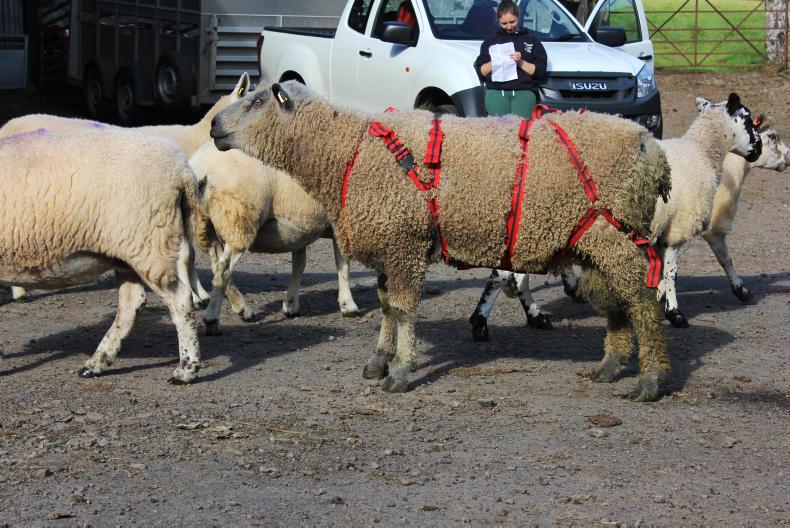The breeding season is just around the corner, and most of the building blocks for 2018 have been put in place.
Mule hoggets have been bought, homebred ewe lambs have been selected, cull ewes have been de-selected and the rest of the flock has been scrutinised and handled. Everything has been running like clockwork, and the only dodgy decision has been the purchase of a new harness to enable me to use an active ram as a teaser.
Starting on a positive note, the ewe lambs are much heavier than usual, which is a direct reflection on the sort of grazing season we’ve experienced so far.
The combination of suitable weather and availability of clean grass resulted in more than 80% of the fat lambs being sold before September, with the ewe lambs showing similar growth rates.
I tagged 50 of them at birth (from supposedly trouble-free mothers), with the intention of keeping 40. Normally, this means rejecting anything that weighs less than about 45kg before shearing in mid-September.
However, this year, I had the luxury of being able to pick and choose a bit more than usual, and I gave the thumbs down to several lambs that weighed between 45kg and 49kg. The 40 females retained for breeding averaged 54kg on 31 August, and varied between 49kg and 64kg.
This is much heavier than any previous year and while I am delighted, I also wonder what the advantages (if any) might be as we approach next year’s lambing season. Is there a chance they are simply overfat? Will it be advantageous over the winter, and will they carry this increased size into next year? Will it give them a greater capacity to rear lambs next year? As always, my best answer is that I haven’t got a clue – I’ll just keep my fingers crossed.
Culls
Among the main flock there have been a few ewes marked for culling that might have been able to run for one more year, and there will be a few wrong decisions in the other direction.
For example, I noticed two ewes (one Texel and one Mule) that shouldn’t have been kept, due to pendulous udders. It wasn’t spotted during handling for mastitis, but when I see them walking across the field, it is blindingly obvious that there will be trouble at lambing time. Those big, full udders (usually accompanied by engorged teats) tend to necessitate hand milking and two days of ‘‘training’’ to teach young lambs the art of suckling while lying on their sides. Short tempers are often part of this equation too. With plenty of grass and no cull ewes sold yet, I suppose there is still time to swap a few rejects and breeders.
Harness
Over-confidence is never an admirable trait, and with all potential breeding animals looking fit and healthy, I may have lost the run of myself a bit. While plotting some means of spreading the lambing dates more evenly, I hit upon a brilliant plan to use one of these ‘‘no mate’’ ram harnesses that, effectively, does the same job as the ancient practice of tying a bag around a ram’s belly to enable him to be used as a teaser.
If you decide upon this course of action, I would strongly advise that you attach it to some docile, well-bred type. Do not, under any circumstances, use a bad-tempered Wensleydale.
My daughter Jenny and I spent nearly half an hour at this task, and it was a bit like harnessing an octopus to a young giraffe.
After working out where all the ends were supposed to go, we then had the unenviable job of putting it on to an angry ram. Walter the Wensleydale is tall, narrow, extremely agile and very cross. When this three-way wrestling match concluded, we let him into a batch of ewes, and he promptly gave two or three jumps into the air, and kicked off the back straps.
After bringing everybody into the yard and changing the angles of several cross-straps, off he went again.
Twenty-four hours later, he had again removed the rear attachments, so a final tighten was necessary and he seems to be gradually accepting his fate.
I don’t think he caught any sheep, but it may be a good idea (in the future) to use a half decent ram, so that in the event of the harness detaching, at least I won’t have lots of O grading lambs to deal with the following year.






 This is a subscriber-only article
This is a subscriber-only article











SHARING OPTIONS: